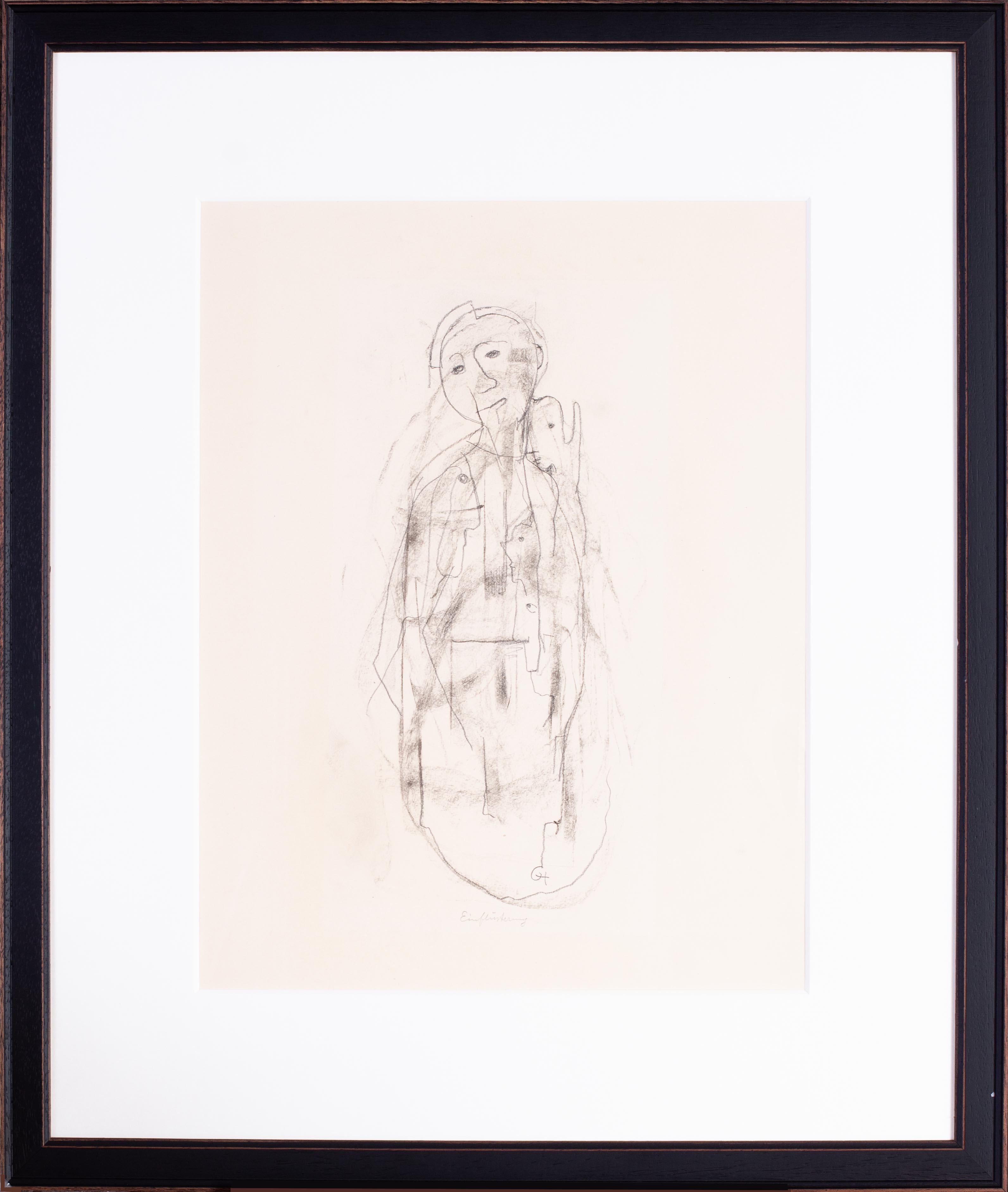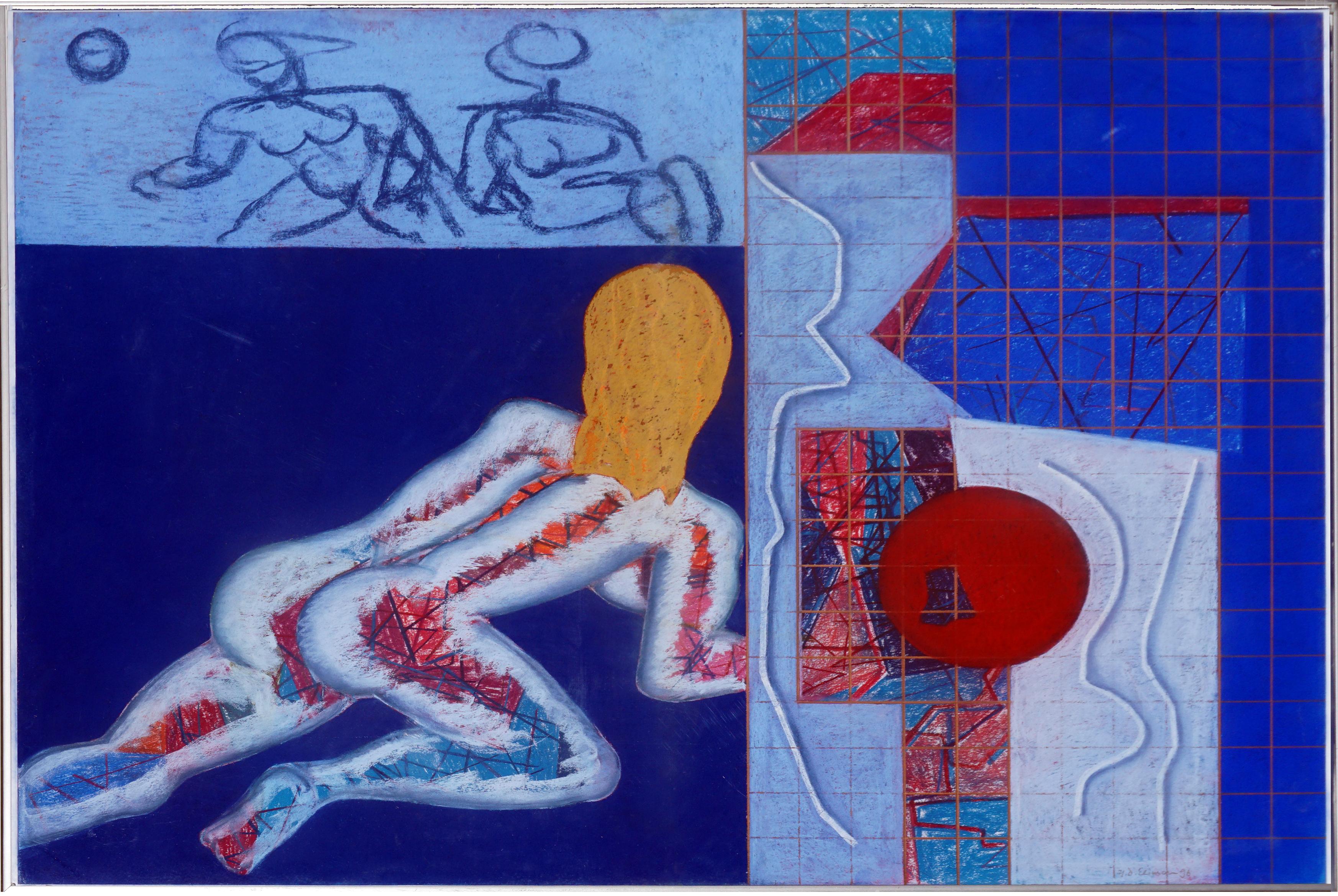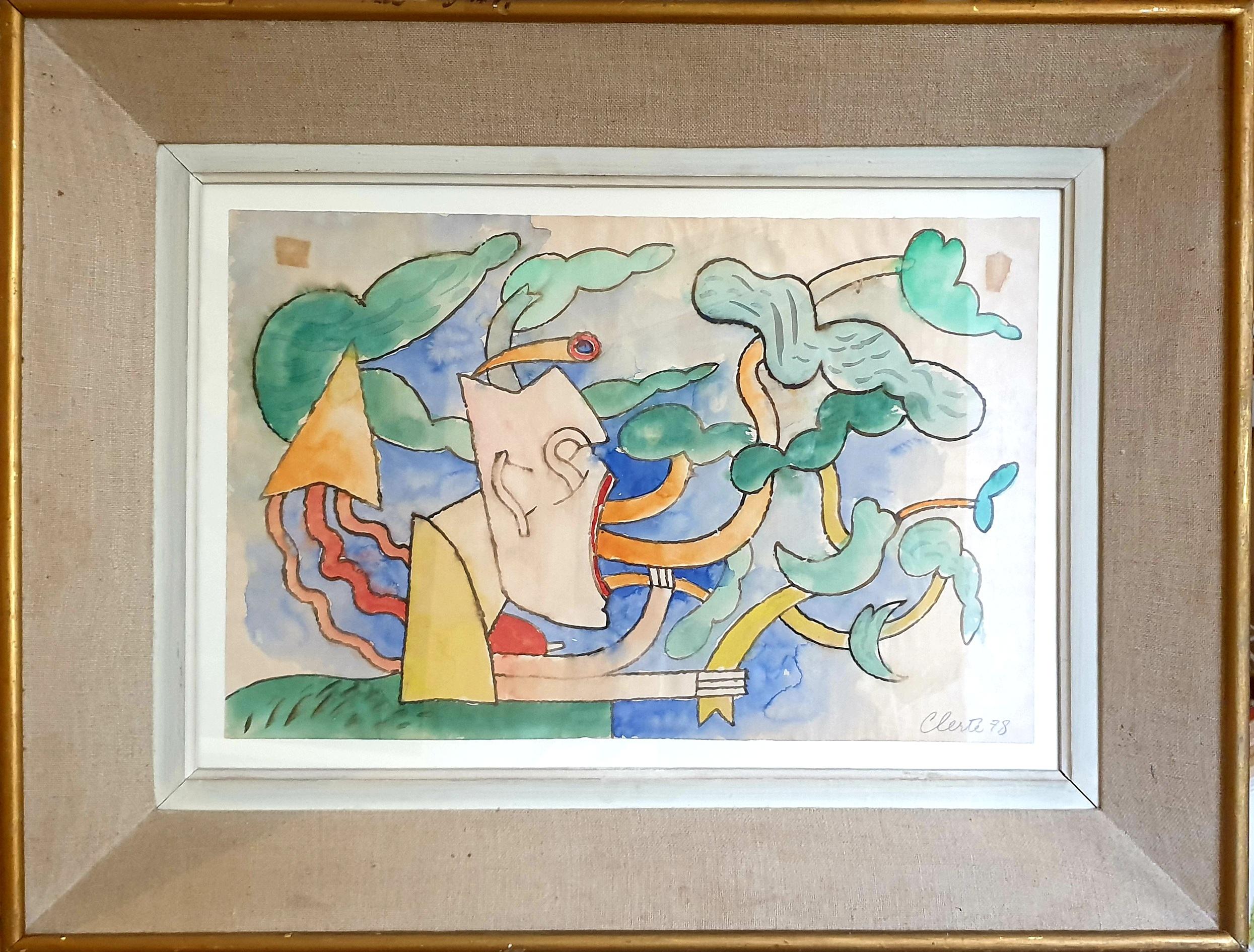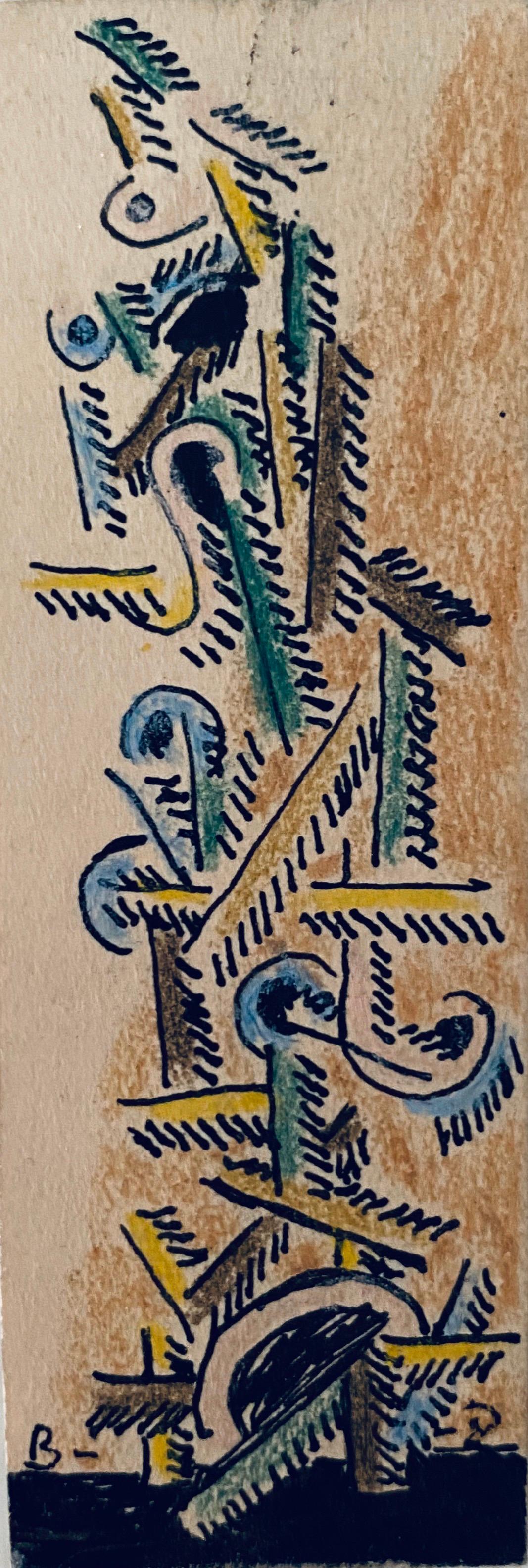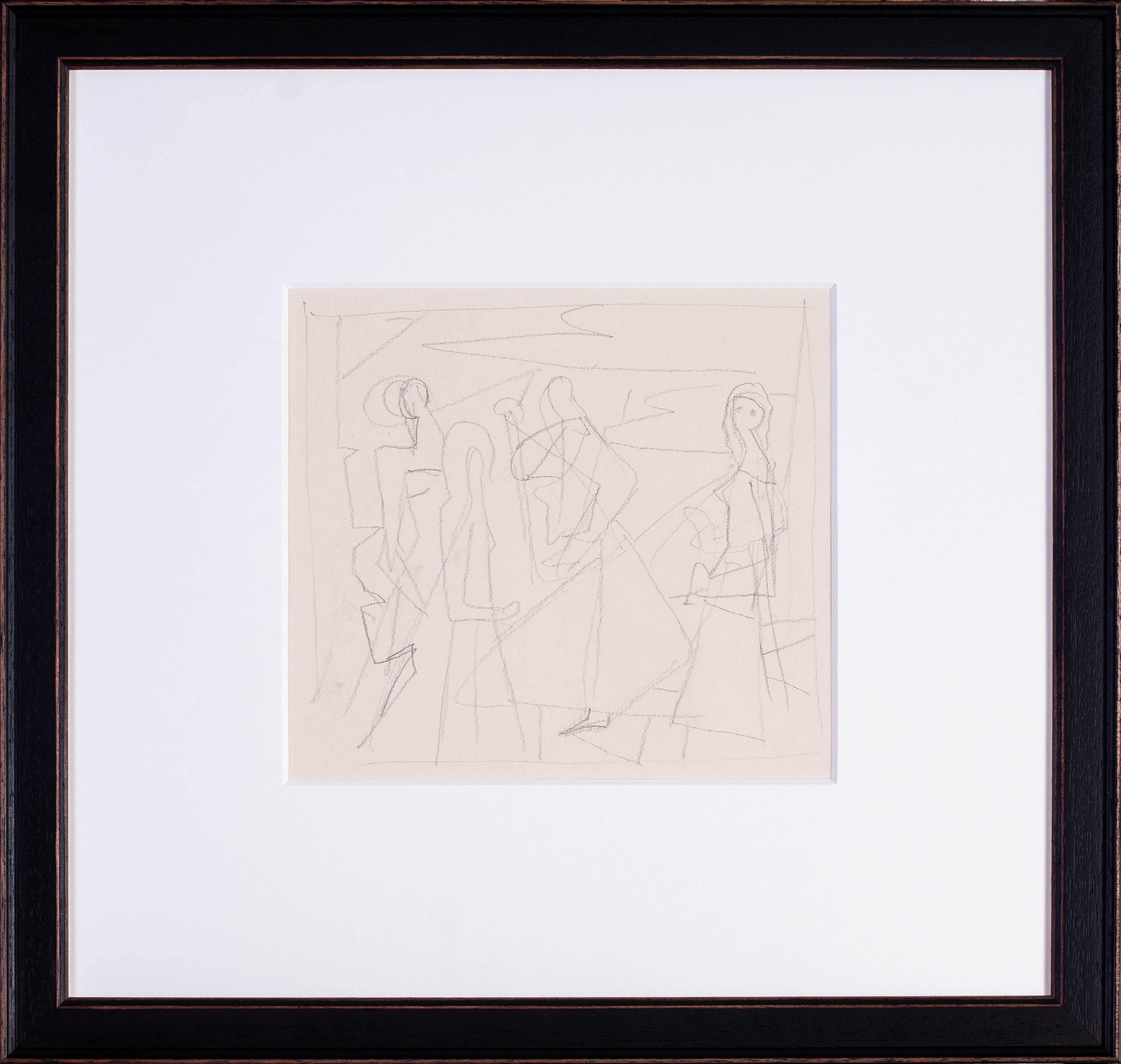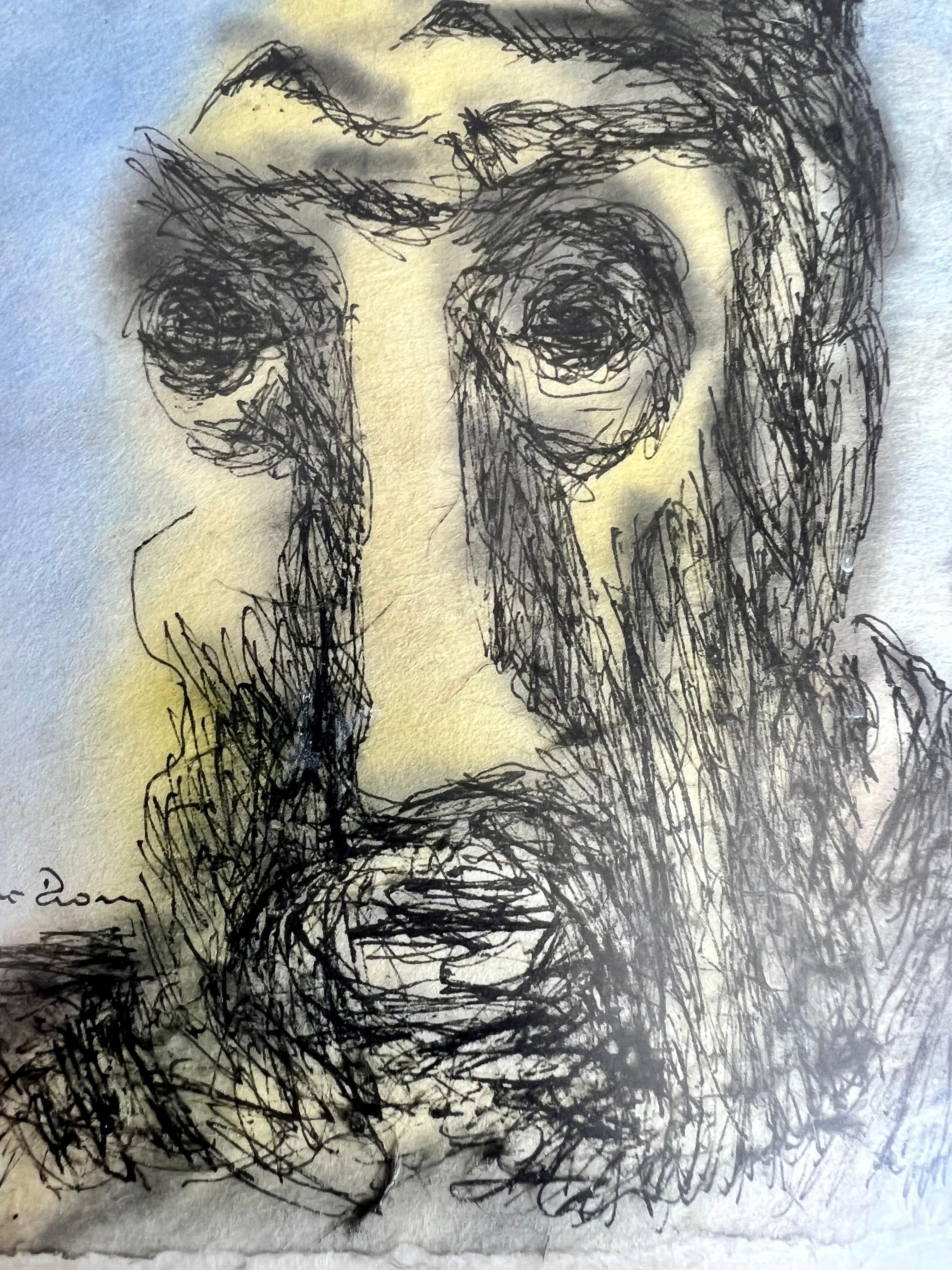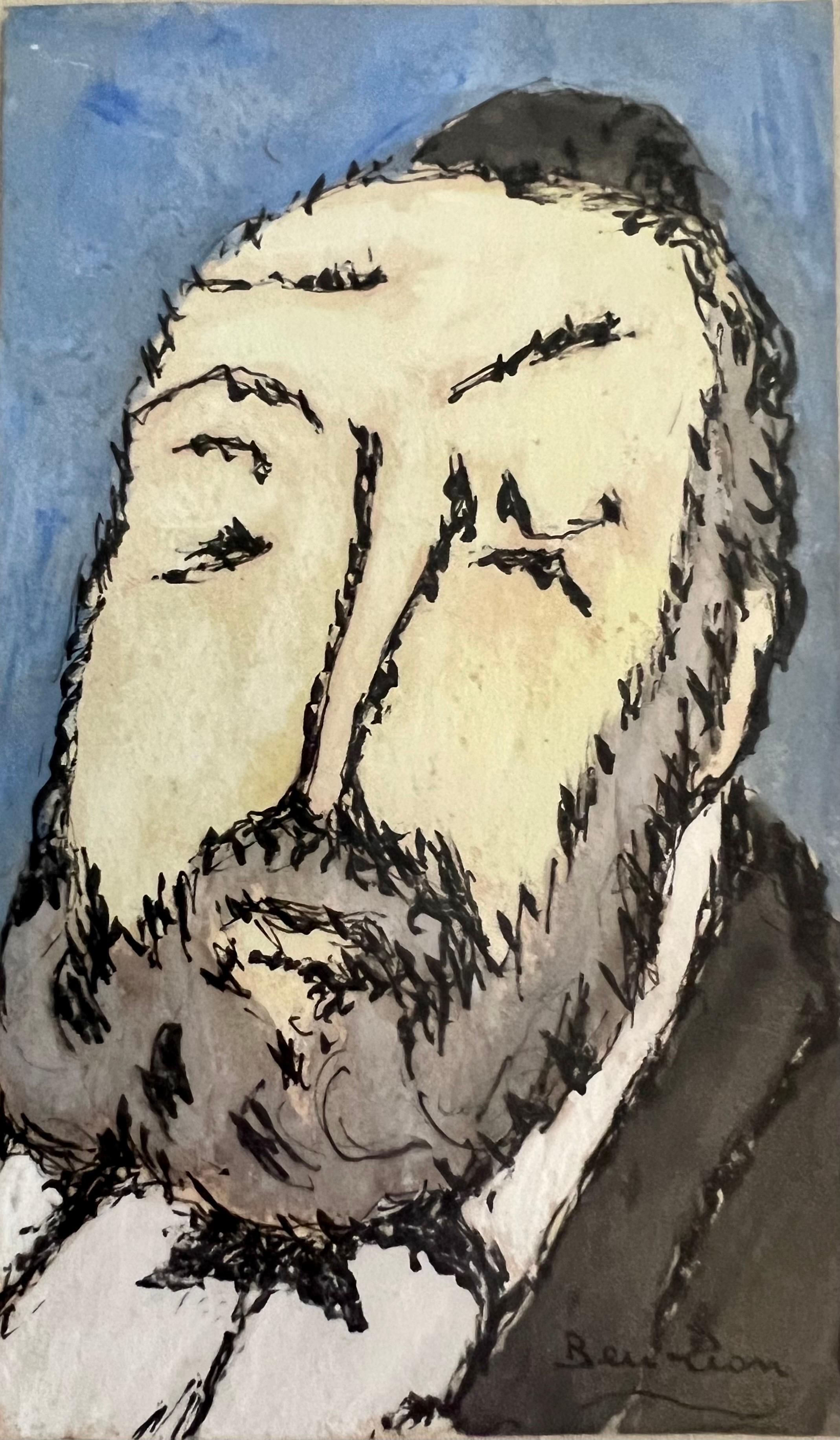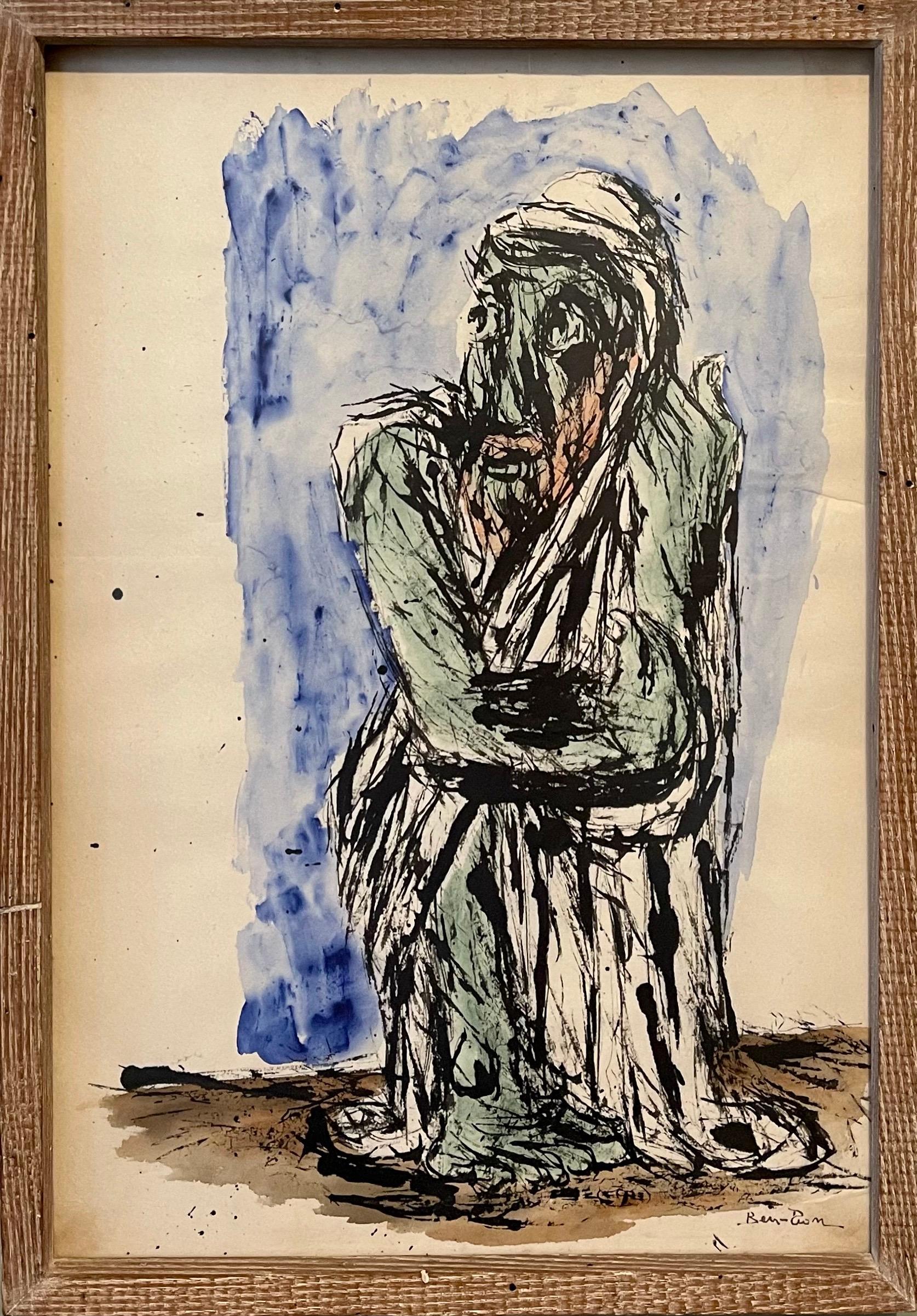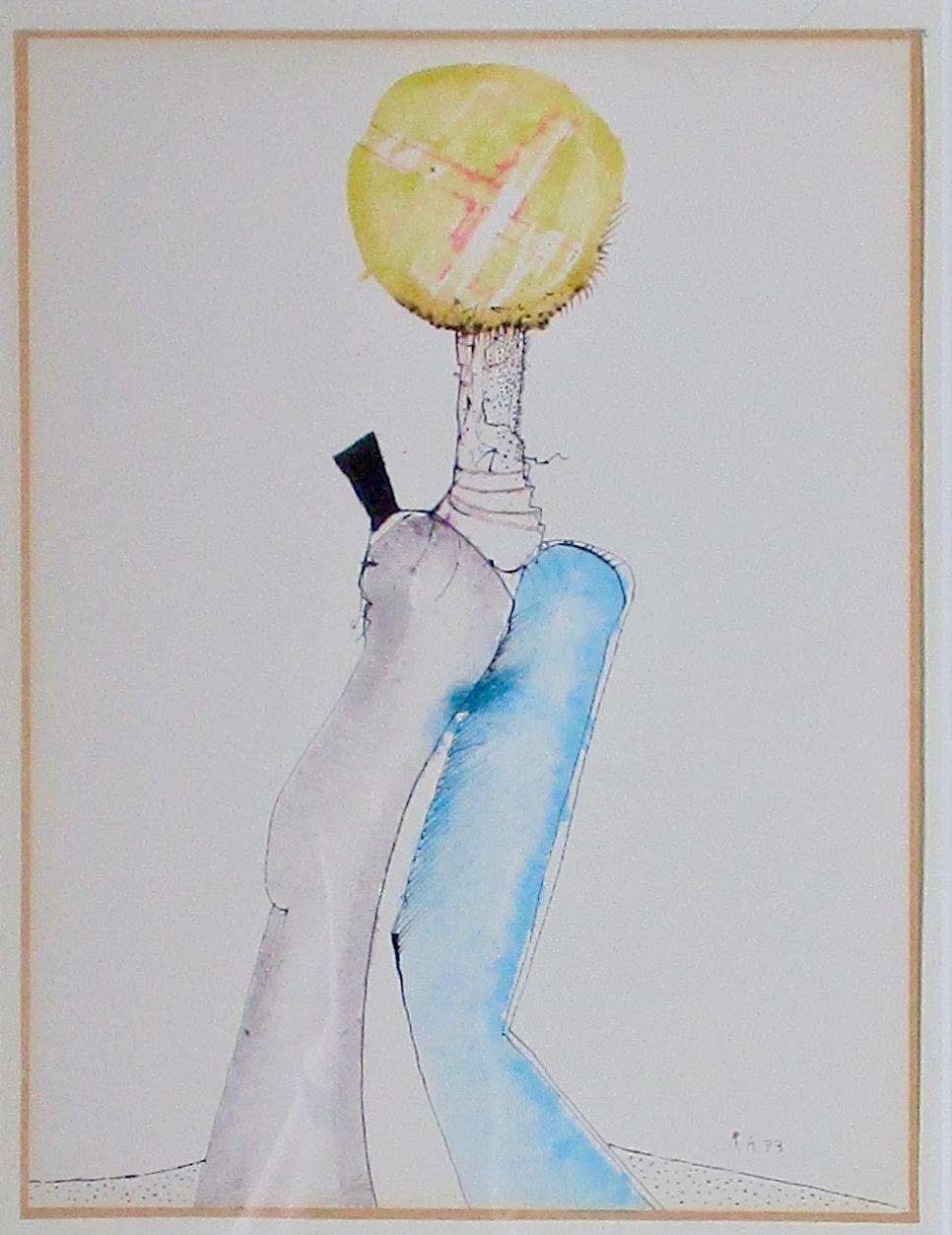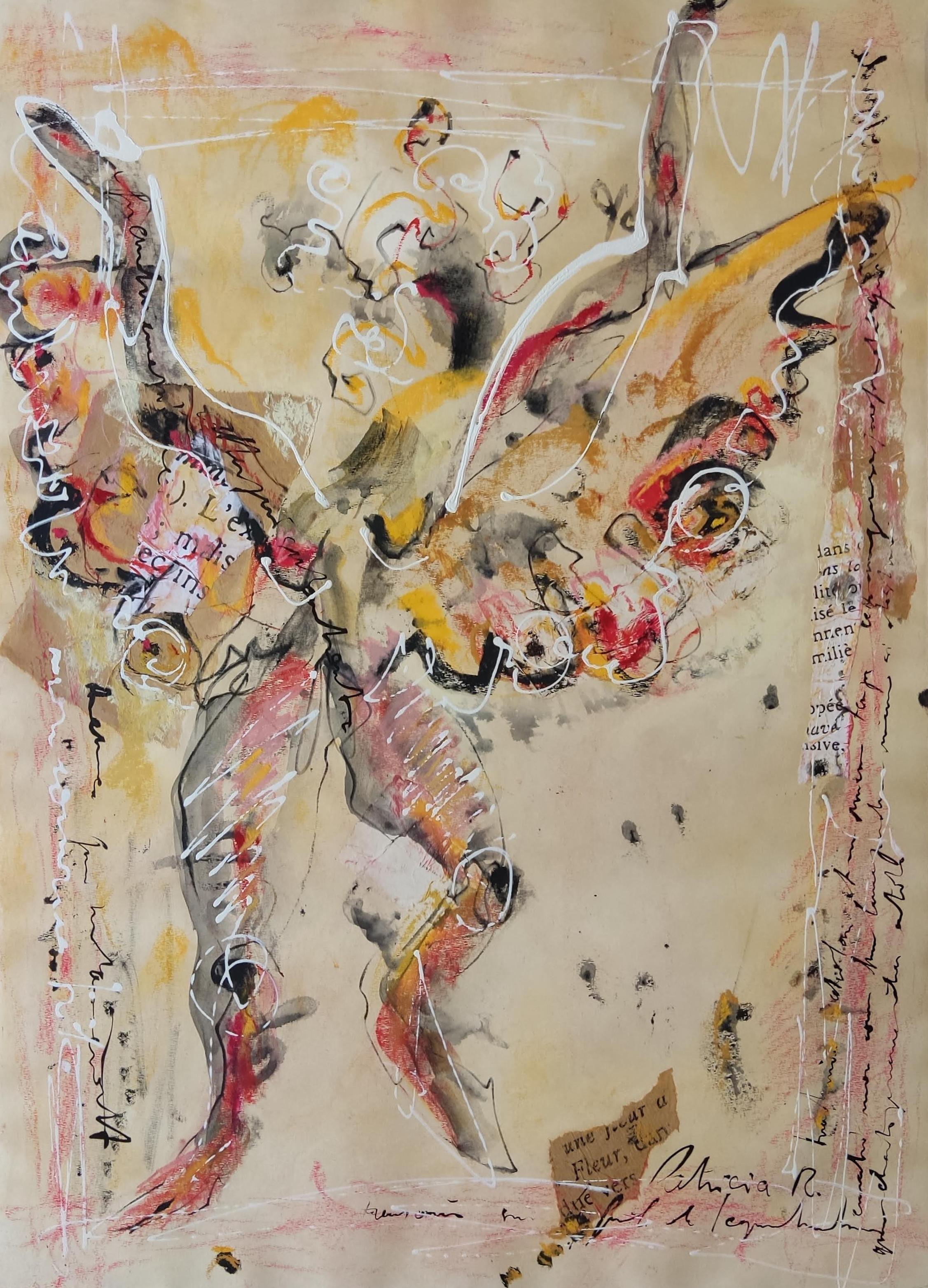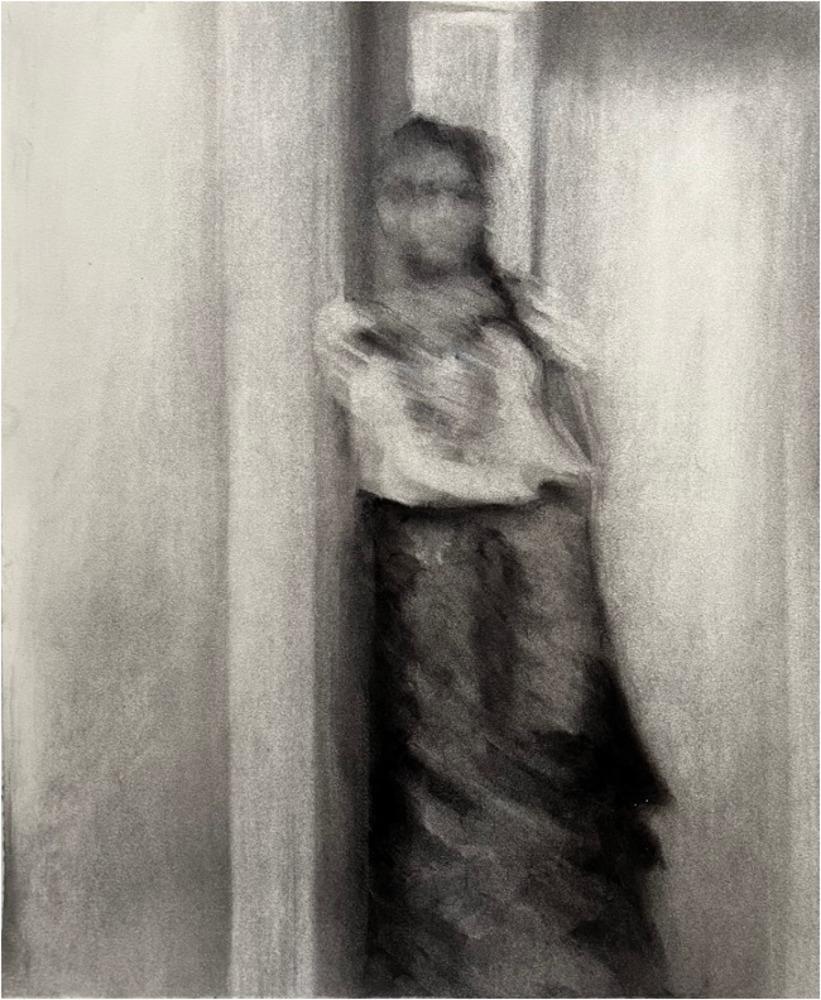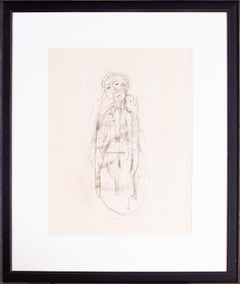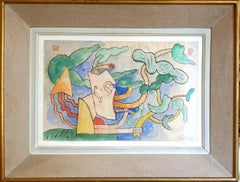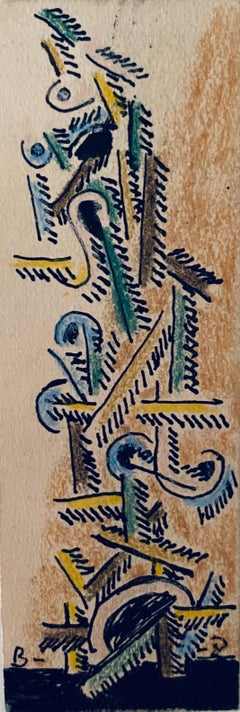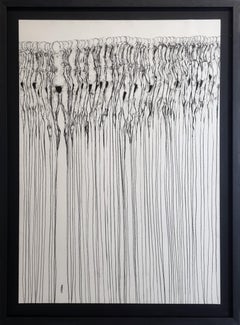
Me and Myselves
View Similar Items
1 of 9
Felix DolahMe and Myselves2018
2018
About the Item
- Creator:Felix Dolah (1988, German)
- Creation Year:2018
- Dimensions:Height: 33.12 in (84.1 cm)Width: 23.39 in (59.4 cm)
- Medium:
- Movement & Style:
- Period:
- Condition:
- Gallery Location:London, GB
- Reference Number:1stDibs: LU1742211046102
Felix Dolah (b.1988) is a self-taught artist who lives and works in Mainz, central Germany. Felix Dolah's drawings are monochrome: mixed on paper, water and charcoal giving birth to a series of portraits of individuals, alone or grouped, whose gender is sometimes difficult to define. Those long limbs loosed like spider-threads, form the originality of these people with deformed features and expressionless faces. The characters seem to emerge from a world in pain where social cohesion reigns supreme. Rehabilitating the importance of the social entity, Felix Dolah raises the communication as unique means of survival. At the heart of his work, there is a humanity that is disintegrating, in a desperate quest for identity. The landscape is nonexistent: only the human counts. The ghostly shadows that populate the universe of Felix Dolah look timeless: they are the part of ourselves that rambles in an in-between, the part which was transformed, camouflaged, destroyed. It is probably for this reason that Felix Dolah leaves fingerprints on some of his drawings, giving the work an organic, carnal dimension. In this way he recomposes an identity which diluted with water, tends to fade. Who are these disembodied bodies? The last upheavals of a world frozen in its inhumanity.
Authenticity Guarantee
In the unlikely event there’s an issue with an item’s authenticity, contact us within 1 year for a full refund. DetailsMoney-Back Guarantee
If your item is not as described, is damaged in transit, or does not arrive, contact us within 7 days for a full refund. Details24-Hour Cancellation
You have a 24-hour grace period in which to reconsider your purchase, with no questions asked.Vetted Professional Sellers
Our world-class sellers must adhere to strict standards for service and quality, maintaining the integrity of our listings.Price-Match Guarantee
If you find that a seller listed the same item for a lower price elsewhere, we’ll match it.Trusted Global Delivery
Our best-in-class carrier network provides specialized shipping options worldwide, including custom delivery.You May Also Like
German expressionist drawing by Carl Hofer' Whispering'
By Carl Hofer
Located in Petworth, West Sussex
Carl Hofer (German, 1875 – 1955)
Einflusterung (Whispering)
Charcoal and pencil on paper
Signed and inscribed ‘Einflusterung’ (lower middle)
17.1/4 x 13.3/8 in. (43.8 x 34 cm.)
Provenance: These works come from the artist’s second wife Elizabeth and from then by descent.
Carl Hofer was a German expressionist painter and the director of the Berlin Academy of Fine Arts. One of the most important painters of the Expressionist movement, his work was among those that was considered degenerate art by the Nazis. He studied in Karlsruhe under Hans Thoma. He first visited Paris in 1899 making acquaintance with Julius Meier-Graefe. In 1902 he studied in Stuttgardt and became friends with the sculptor Hermann Haller...
Category
20th Century Expressionist Figurative Drawings and Watercolors
Materials
Paper, Charcoal
Modernist Avant-Gard Figurative Abstract, Large-Scale Primary Colors Pastel
By Henry Elinson
Located in Soquel, CA
Stunning modernist avant-garde figurative abstract pastel in deep royal blue, with red and yellow accents by Henry Elinson (Californian/Russian 1935-2010), 1996. Signed and dated "H....
Category
1960s Expressionist Figurative Drawings and Watercolors
Materials
Paper, Pastel
$3,080 Sale Price
20% Off
'Mother Nature', Lyrical Surrealist Abstract Watercolour on Paper.
Located in Cotignac, FR
Mid-century lyrical surrealist abstract watercolour on paper by French artist Jean Clerté, signed and dated bottom right. Presented in mid-century frame.
Jean Clerté , born in 1930 in Saint-Savin-sur-Gartempe in Vienne, is a French painter, engraver, draftsman, watercolourist and sculptor . This work is a great example of his more humorous and expressive work influenced by Alechinsky from the late 1960s onwards. There is a light playfulness and yet the watercolours are more vivid than his previous palette.
Jean Clerté works in series. His sequential narrations testify both to a youthful spontaneity and to a perfect mastery in the distribution of forms and images on the painted surface. The narration is not only an accumulation of juxtaposed fragments and symbols, it forms a whole, it takes on and gives meaning. In general, we can say of Clerté that he practices an “eco-art” that feeds on primary hungers: the feeling of being united with nature, the vegetable, the mineral, the aquatic. In his colourful canvases, his inks, his boxes, his objects, like a shaman on the path of his dreams, the painter Clerté mounts an assault on beasts and demons, elves and gnomes. From the Poitevin marshes to the tropical forests emerges a fauna caught in the meanders of a design that marvels at the appearance of these grotesque idols.
Jean Clerté began to draw and paint at a very young age, and at the age of 15 he enrolled at the École des Beaux-Arts in Poitiers. Then in 1949, curious about the capital, he moved to Paris. Having very few financial resources, he could not continue his studies at first, worked as a model to survive, and met other artists; he was then admitted to the studio of Ossip Zadkine and, from 1952, he was also able to study engraving at Atelier 17 of Stanley William Hayter, an English engraver and printer living in Paris associated in the 1930s with surrealism.
At the end of the 1960s, he worked alongside Pierre Alechinsky, founding member of the Cobra movement, engraving Alechinsky's originals, benefiting from his advice, and discovering acrylic as a medium.
From 1976, Jean Clerté became associate professor at Hayter. Clerté had taught previously, in 1971 at the Salzburg Summer University and in 1972 he gave courses at the Paris-Sorbonne University . In 1981, he was appointed professor at the School of Decorative Arts , where he had Maïlys Seydoux-Dumas as a student and, from 1983 to 1988, he was Alechinsky's assistant professor at the Paris School of Fine Arts.
His first works are part of the current of lyrical abstraction, and are nourished by impressions of nature (landscape motifs, e.g. forest fires, waterscapes), then around 1968, encouraged by Alechinsky, he rejects abstraction, and his work becomes more figurative with expressive and humorous elements. From this period his colours are more subdued, often with pastel tones, he works on series. Jean Clerté has created a world in a space where drawing, painting, objects participate in a playful figuration. From his drawings were born sculptures and sometimes mobiles (Le Moulin à dessin). If it is the artist who makes astonishing, polychrome, whimsical “toys”, it is the painter who appeals to adults through his caustic and satirical humour.
His first exhibitions in France took place at the Galerie Massol , then at the Galerie Pascal...
Category
Mid-20th Century Expressionist Figurative Drawings and Watercolors
Materials
Paper, Watercolor
Abstract Drawing Watercolor Painting Totem Column Jewish American Modernist WPA
By Ben-Zion Weinman
Located in Surfside, FL
Miniature Abstract Totem. Signed with initials.
Provenance: Virginia Field, Arts administrator; New York, N.Y. Assistant director for Asia House gallery. (she was friends with John v...
Category
Mid-20th Century Expressionist Abstract Drawings and Watercolors
Materials
Ink, Watercolor
German Expressionist drawing of abstracted figures by Carl Hofer
By Carl Hofer
Located in Petworth, West Sussex
Carl Hofer (German, 1875 – 1955)
Abstract figures
Pencil on paper
8.1/4 x 9 in. (21 x 23 cm.)
With studio stamp (on the reverse) and signature of the artist’s wife Elizabeth Hofer
Provenance: These works come from the artist’s second wife Elizabeth and from then by descent.
Carl Hofer was a German expressionist painter and the director of the Berlin Academy of Fine Arts. One of the most important painters of the Expressionist movement, his work was among those that was considered degenerate art by the Nazis. He studied in Karlsruhe under Hans Thoma. He first visited Paris in 1899 making acquaintance with Julius Meier-Graefe. In 1902 he studied in Stuttgardt and became friends with the sculptor Hermann Haller...
Category
20th Century Expressionist Figurative Drawings and Watercolors
Materials
Paper, Pencil
Ben ZIon Expressionist Judaica Rabbi Watercolor Painting Jewish Modernist WPA
By Ben-Zion Weinman
Located in Surfside, FL
Frame measures 13.5 X 11.5
Paper measures 6.5 X 5 inches
Hand signed lower right
Watercolor painting of prophet or Rabbi, Judaica artwork
Born in 1897, Ben-Zion Weinman celebrated h...
Category
Mid-20th Century Expressionist Abstract Drawings and Watercolors
Materials
Paper, Watercolor
Recently Viewed
View AllMore Ways To Browse
Joan Carl
Herta Hausmann
John Carlisle
Alfred Weber
Cyclops Painting
Lake Kids Painting
Landscape Conte Crayon
Arpege Lanvin Vintage
Jean Francois Millet Drawing
Delpech Nude
Painting Of Half Moon Bay
Avery Chair
Joan Jonas
Alice Adams
Chalk Drawings Flowers
Edgar Degas Horse
The Plaza Hotel Nyc
Andre Roland Brudieux
